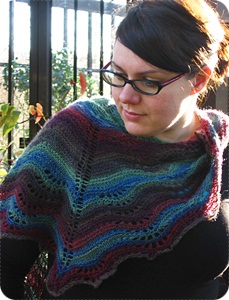 The economic recession has claimed many victims. The first phase saw people losing jobs, companies going bankrupt and banks folding. Experts say that this first wave is over. Signs of economic growth are visible in the financial sectors. We are now living through the second phase: spending cuts have to be made. This is all very textbook Keynesian economic theory and I recommend reading up on John Maynard Keynes (quite apart from being a significant economist, Keynes was also part of the Bloomsbury group alongside Virginia Woolf, E.M. Forster and Lyndham Lewis) if most of the current financial news leaves you confused.
Spending cuts hurt. Before Christmas, many of my physicist friends were shocked when spending cuts to the tune of £115m were made in the science research sector. When I graduated from university in Denmark some seven or eight years ago, I saw what huge spending cuts will do to scientific research. It was not pretty. My then-department went from being autonomous with at least six new PhD students every year to being yoked together with five other subjects and get one PhD student every other year. The departmental restructuring made for some interesting cross-pollination, but also for disastrous academic results.
The economic recession has claimed many victims. The first phase saw people losing jobs, companies going bankrupt and banks folding. Experts say that this first wave is over. Signs of economic growth are visible in the financial sectors. We are now living through the second phase: spending cuts have to be made. This is all very textbook Keynesian economic theory and I recommend reading up on John Maynard Keynes (quite apart from being a significant economist, Keynes was also part of the Bloomsbury group alongside Virginia Woolf, E.M. Forster and Lyndham Lewis) if most of the current financial news leaves you confused.
Spending cuts hurt. Before Christmas, many of my physicist friends were shocked when spending cuts to the tune of £115m were made in the science research sector. When I graduated from university in Denmark some seven or eight years ago, I saw what huge spending cuts will do to scientific research. It was not pretty. My then-department went from being autonomous with at least six new PhD students every year to being yoked together with five other subjects and get one PhD student every other year. The departmental restructuring made for some interesting cross-pollination, but also for disastrous academic results.
And so I learn that Kings College London may have to shut down its Palaeography department in order to meet budget targets. No restructuring, no "let us marry you to Library Science (however awkward) or maybe History or how about Archaeology?" and no shuffling the cards. I am not just saddened. I am shocked. KCL is the only place in the UK to have a Palaeography department and, I believe, even the only place in Europe.
Palaeography, the study of ancient handwriting, may sound like a very obscure subject - and really it is an obscure subject - but it is also incredibly important to scholars. Printing being a very recent invention, most available written material was done by hand and scholars need to be able to decipher handwriting. You get different writing systems (think Cuneiform), different alphabets (think how different the Phoenician alphabet looks to the Latin alphabet) and then different ways of interpreting the alphabets through writing. Pre-printing, many European kingdoms would have their own way of combining and forming letters - Johanna Drucker is particularly good on this, if you want to read more - and some handwriting is only intelligible to specialists who have studied handwriting traditions of a particular area (South Germany, for instance). So much material is now being made available by library specialists, but now I wonder who will be around to read, understand and disseminate this material.
(If I had know that Palaeography existed as a discipline when I started university, I would have ended up in a very different place to now. As is, most of my knowledge is filtered through print culture, so I apologise for any glaring mistakes)

 Lady on the left? My great-grandmother. She would have been ninety-four today.
The photo was taken in the early 1950s outside her cottage and she is with two of her sons, K and T.
Lady on the left? My great-grandmother. She would have been ninety-four today.
The photo was taken in the early 1950s outside her cottage and she is with two of her sons, K and T.

